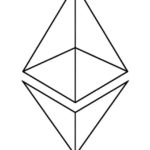DeFi’s Liquidity Dilemma: A Path to Global Adoption
DeFi faces a significant challenge: liquidity fragmentation. Protocols are stuck in a cycle of incentive-driven inflows and outflows. Retail investors, worried about complexity and security, often avoid spreading their assets across different chains. This results in over $400 billion in idle assets locked in siloed chains.
DeFi protocols compete for limited liquidity, with demand far exceeding supply. Unlike conventional finance, which benefits from deep, integrated markets, DeFi is fragmented. Centralized banks can regulate liquidity easily, but DeFi’s decentralized nature makes it tough. Users find it hard to distribute assets effectively, leaving vast sums unused. This hinders DeFi’s growth and global adoption.
Traditional finance enjoys deep, integrated markets. Centralized banks can regulate liquidity easily, but DeFi’s decentralized nature makes it tough. Users find it hard to distribute assets effectively,leaving vast sums unused. This hinders DeFi’s growth and global adoption.
DeFi protocols compete for limited liquidity, with demand far exceeding supply. Unlike traditional finance, which benefits from deep, integrated markets, DeFi is fragmented. Centralized banks can regulate liquidity easily, but DeFi’s decentralized nature makes it tough. Users find it hard to distribute assets effectively, leaving vast sums unused. This hinders DeFi’s growth and global adoption.
DeFi protocols compete for limited liquidity, with demand far exceeding supply. Unlike traditional finance, which benefits from deep, integrated markets, DeFi is fragmented. centralized banks can regulate liquidity easily, but DeFi’s decentralized nature makes it tough. Users find it hard to distribute assets effectively, leaving vast sums unused. this hinders DeFi’s growth and global adoption.
DeFi protocols compete for limited liquidity, with demand far exceeding supply. unlike traditional finance,which benefits from deep,integrated markets,DeFi is fragmented. Centralized banks can regulate liquidity easily, but DeFi’s decentralized nature makes it tough. Users find it hard to distribute assets effectively, leaving vast sums unused. This hinders DeFi’s growth and global adoption.
DeFi’s Future: Unlocking Free-Flowing markets Through Collaboration
The DeFi space is on the cusp of a major transformation. By eliminating short-term APY wars, lenders can deploy assets with greater confidence. A unified liquidity framework mitigates risk without sacrificing returns, accelerating DeFi’s growth.
For retail users, this represents a significant breakthrough. Accessible cross-chain markets allow easy diversification without complex bridges or unneeded risks. Simplified user experiences lower technical barriers, making staking, lending, and trading more accessible.
Reduced exposure boosts confidence, driving DeFi adoption and introducing billions of dollars to new markets, realizing the sector’s potential. However, DeFi must go beyond isolated solutions. Major ecosystems should establish shared standards through interoperable liquidity hubs or decentralized coordination mechanisms.
- Collaboration is key for a healthy and prosperous ecosystem.
- A sustained industry-wide effort is needed for lasting growth.
A coordinated response is essential for defi to reach its potential. The industry is currently trapped in a cycle of short-term incentives, with fragmented capital and siloed key assets. Without a shift towards a global liquidity layer, scaling and innovation will be challenging.
The foundations for this shift exist but a coordinated response is missing. For those who believe in DeFi, a future with free-flowing liquidity across chains is essential. This is the path forward for a thriving DeFi ecosystem.







